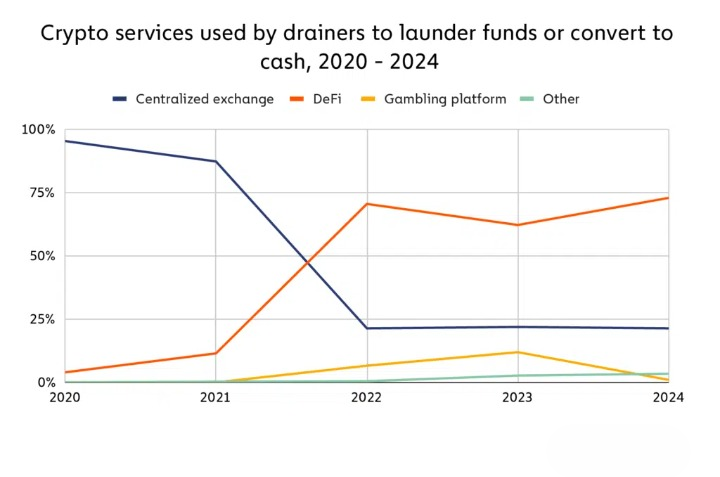
Phishing scammers using crypto drainers are no longer channeling stolen funds to centralized exchanges but are instead opting for swap protocols and bridges.
The tactics of cybercriminals behind drainers have undergone significant changes, with the majority of stolen funds now being directed toward decentralized finance (DeFi) protocols. This marks a notable shift from 2020, when centralized exchanges were the primary destination.
According to data from Chainalysis, in 2023, close to 75% of funds pilfered through crypto drainers were routed into DeFi, in stark contrast to 2020 when over 90% flowed into centralized exchanges. Chainalysis analysts also noted that some drainers are dabbling in gambling services, albeit to a lesser extent.

The blockchain intelligence firm headquartered in New York highlights that the quarterly growth rate in value pilfered by these drainers has surpassed that of ransomware, a category previously renowned for its swift expansion.
Chainalysis acknowledged the challenge in gauging the true scope of phishing activities, noting the difficulty in tracking the total sums stolen by drainers, given that many crypto drainer scams go unreported.
As previously reported by crypto.news, ransomware attacks involving payments experienced a 46% decline in 2023, attributed to a saturated ransomware market and reduced barriers to entry. Chainalysis suggests that this decline in ransomware payments can be partly attributed to improved cyber resilience among organizations, as companies now possess a better understanding of the threats they face.

0 Comments